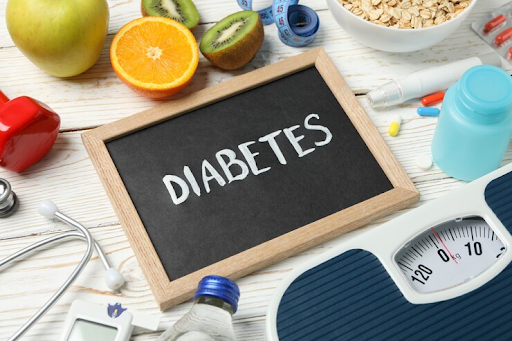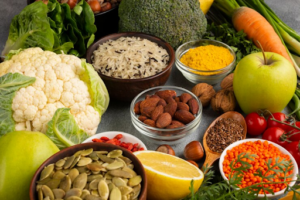


News published by BBC shows that there are over 100 million people in India living with diabetes.
If you are one of them searching for ways to manage your diabetes, you have clicked on the right blog post.
Minor lifestyle and food chart improvements for diabetic patients can help you manage your blood sugar levels.
You need a qualified dietician, Priyanka, who can prepare the best diet chart.
Let’s see how she can help!
Carbohydrates are a fundamental part of a healthy diet, but for people with diabetes, managing carbohydrate intake becomes crucial for maintaining healthy blood sugar levels.
Here’s why:
How Carbs Affect Blood Sugar?
The Glycemic Index (GI) Steps In!
The Glycemic Index (GI) is a ranking system that assigns a value (from 0 to 100) to carbohydrate-containing foods based on their impact on blood sugar levels.
Here’s how it helps people with diabetes make informed choices:
GI as a Tool, Not a Rule
It’s important to remember that GI is just one factor to consider. The overall glycemic load (amount of carbohydrates in a serving) and how you combine foods can also impact blood sugar.
For example, pairing a high-GI food with a protein or healthy fat source can slow down sugar absorption.
Benefits of Choosing Low GI Foods for Diabetics

Now that you know how food is added to your diet with the help of the glycemic index.
Here are some essential foods for diabetic patients that Dietician Priyanka recommends for your daily meals:
Non-starchy vegetables are low in carbohydrates but high in fiber. Also, they have a low glycemic impact, which makes them an excellent choice for diabetic patients.
The dietician at Indyte prepares the diet chart by adding non-starchy vegetables like spinach, broccoli, cauliflower, tomatoes, zucchini, and carrots to every meal.
While fruits are natural sources of carbohydrates, they can still affect blood sugar levels.
Choosing fruits with a lower glycemic index, such as berries, strawberries, blueberries, raspberries, oranges, grapefruit, apples, and pears is essential.
Compared to processed grains, whole grains have a reduced glycemic impact and are a great source of fiber.
You should add whole grains like brown rice, quinoa, oats, whole-wheat bread, and whole-grain pasta.
These can provide sustained energy and help keep your blood sugar levels steady.
A study shows lean protein sources are essential for controlling blood sugar and promoting satiety. Add foods rich in lean protein, like skimmed milk, tofu, yogurt, beans, lentils, fish (tuna, salmon), eggs, and chicken breast.
Olive oil, avocados, nuts (almonds, walnuts), and seeds (chia, flaxseeds) are good sources of healthy fats.
| Food Chart For Diabetic Patients | |
| Timing | Diet Advice |
| Early Morning | 1 Glass Fenugreek Seeds Water (1 Tbsp Fenugreek Seeds) |
| In Between- Soaked 5-6 Almonds + 2 Walnuts | |
| Breakfast | 1 Cup Poha/ Egg White Omelette |
| Mid meal | Seasonal Fruits 100-200g With Seeds 20 G |
| Lunch | 1 Bowl Salad+ 1 Bowl Dal+ 1 Millet Roti / 1 Cup Boiled Rice + Subji Seasonal |
| Evening | 1 Cup Herbal Tea + Handful Roasted Chana / Makhana |
| Dinner | Salad+ 1 Bowl Subji + 1 Millet Chapati |
| Before Bed Time | 100-150 Ml Low Fat Milk Pinch Of Cinnamon |
Here are some food items that a diabetic patient must avoid, are as follows:
Avoid chips, cookies, pastries, and ready-made meals. These foods are high in refined carbohydrates, added sugars, sodium, and unhealthy fats, spike blood sugar levels.
Limit white bread, white rice, pastries, and sugary cereals. These refined carbs lack fiber and are quickly digested, spiking blood sugar.
Avoid sodas, fruit juices, and sweet teas. They are loaded with added sugars that rapidly raise blood sugar. These drinks provide no nutrients and can lead to weight gain and worsen diabetes.
Reduce your intake of processed meats, baked products, and fried foods containing saturated and trans fats. These bad fats can increase diabetes problems, insulin resistance, and inflammation.
We have shared essential food choices, items you must avoid, and a sample food chart for diabetic patients.
Let’s show you the tips that can help you manage diabetes:
Controlling portion sizes is crucial for blood sugar management. Use measuring cups, a food scale, or portion control plates to ensure you eat appropriate serving sizes, especially for carbohydrate-rich foods.
Maintain a regular eating routine by having your meals and snacks at roughly the same time every day. It reduces the risk of blood sugar crashes and increased sugar levels from prolonged fasting.
Adapt yourself to the habit of reading nutrition labels on packaged foods. Pay close attention to the serving size and the total carbohydrate content. It will help you make informed choices and better manage your carb intake.
Consult a qualified dietician with expertise in managing diabetes. They can design a customized meal plan that fits your tastes, requirements, and way of life.
For example, dietitian Priyanka at Indyte, with her expertise, designs the best diabetes reversal diet plans and provides valuable guidance and support as you make dietary changes.
Now you know how little things can make significant differences.
By following a balanced diet chart, adding these essential food groups, limiting problematic foods, and implementing additional tips, you can take control of your blood sugar levels and improve your overall wellness.
However, sometimes, managing a diabetes-friendly diet yourself can be tricky.
This is where the Indyte professional dietitians and nutritionists can help.
Their diabetes reversal program in India offers personalized meal plans for you.
These dietitians will consider your needs, likes, and lifestyle to create a diet plan.
So, don’t let diabetes control your life. Take control with the right food choices, get help from Indyte, and live a healthier, more balanced diabetic life.
